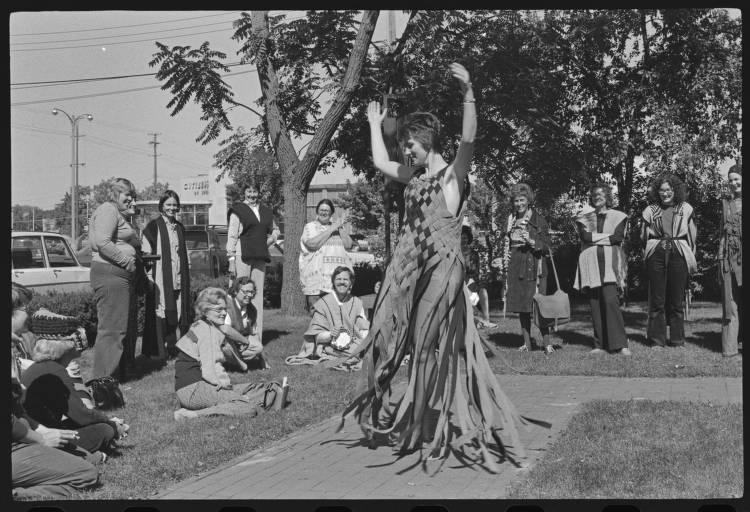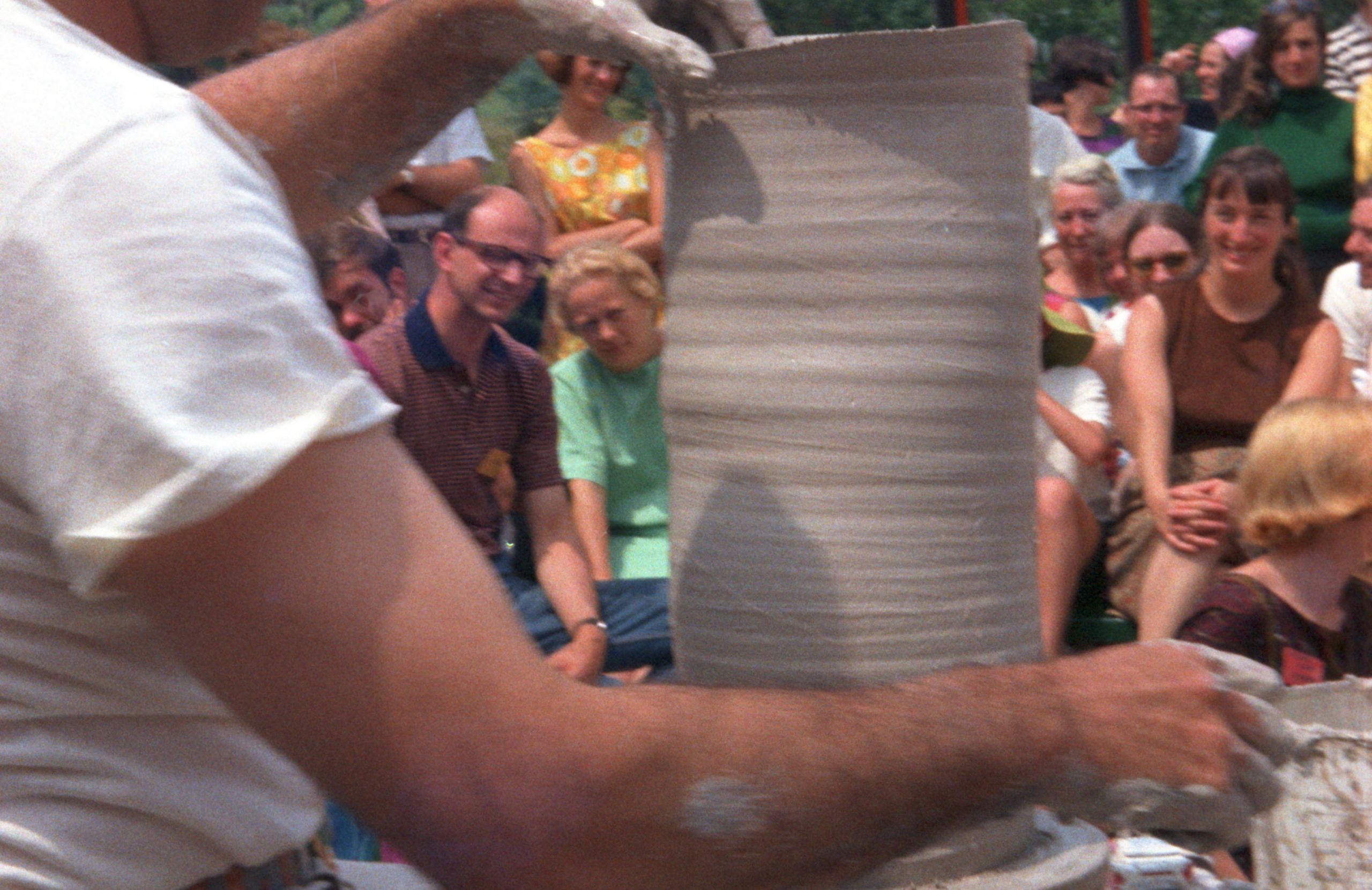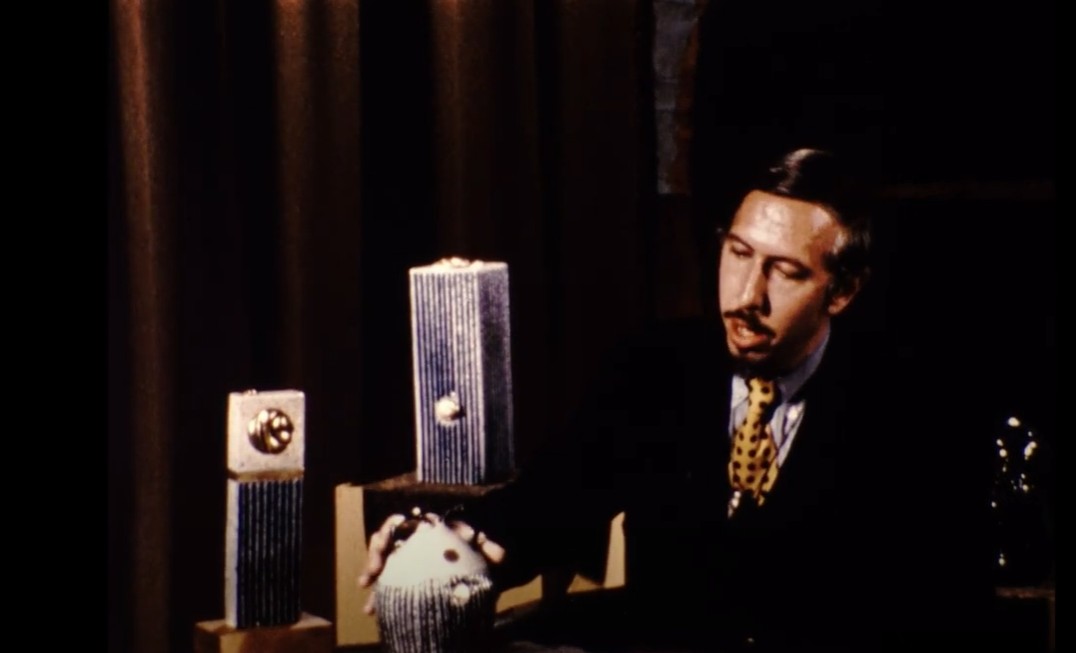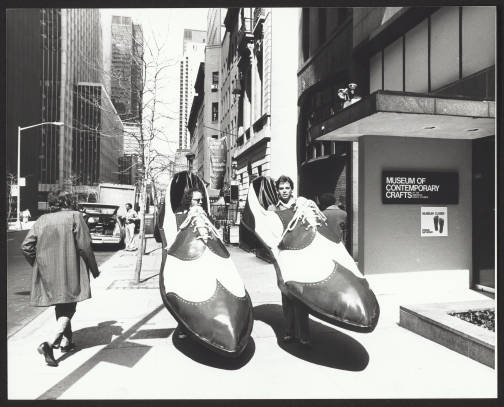Continually learning.
The American Craft Council Archives is a robust resource for discovering the history of contemporary American craft. Reflecting ACC’s commitment to continual learning, more than 25,000 digital assets and thousands of physical records offer researchers, ACC members, and the craft curious an opportunity to explore the past, present, and future of craft.
ACC’s Library & Archives to support craft scholarship from a new home.
We are excited to announce a partnership with the Center for Craft in Asheville, NC, to foster craft scholarship and research and increase public access to the ACC Library & Archives collections. Recognized as one of the most robust resources for exploring and understanding the history of contemporary American craft and its makers, the Library & Archives will move to the Center for Craft’s welcoming facility located in one of the country’s most vibrant craft hubs.

-
Digital archives
records on the history of contemporary craft available online
-
Physical archives
linear feet of physical archival materials available for research
-
Artist files
historical files on artists who have won ACC Awards

Explore collections.

Digital collections
Explore an open-access collection of thousands of unique images, documents, and media detailing the history of contemporary craft in America.

American Craft Council (1940–present)
Explore ACC’s history through unique archival materials housed within our physical archives.

Museum of Contemporary Crafts / American Craft Museum (1956–1990)
Explore the history of the Museum of Contemporary Crafts, predecessor to the Museum of Art and Design, through materials in our physical archives.
Audiovisual Collection (1951-2003)
Explore the ACC holdings of audiovisual recordings documenting craft-related events, interviews and more.

Research inquiries.
Individuals can conduct preliminary research in the archives collections by consulting the finding-aid documents. The finding aids provide context and an overview for each processed collection. We can also provide access to all archival collections onsite.

Additional information.
-
The American Craft Council Library & Archives licenses select archival material copyrighted by the ACC for use in publications and online.
-
The images, artworks, text, data, files, audio and video clips, illustrations, designs, and documentation (the “Materials”) in the American Craft Council Archives are the property of the American Craft Council and may be protected by copyright laws and may be covered by other restrictions as well. Copyrights and other proprietary rights in the Materials may also be owned by individuals and entities other than, and in addition to, the American Craft Council.
The American Craft Council does not warrant that use of the Materials will not infringe the rights of third parties not owned by or affiliated with the American Craft Council. It is your obligation to determine and satisfy copyright or other use restrictions when publishing or otherwise distributing Materials from the ACC Archives collections.
-
The American Craft Council Library & Archives does not object to your reproduction, distribution, display, transmission, performance, and use of the Content and/or Compilation if done in accordance with 17 U.S.C. §107 (“Fair Use”), 17 U.S.C. §110 (the Teach Act), or other applicable limitations and exemptions set forth in the U.S. Copyright Act and related laws.
The copyright law of the United States (Title 17, United States Code) governs the making of photocopies or other reproductions of copyrighted material. Under certain conditions specified in the law, libraries and archives are authorized to furnish a photocopy or other reproduction. One of these specified conditions is that the photocopy or reproduction is not to be “used for any purpose other than private study, scholarship, or research.” If a user makes a request for, or later uses, a photocopy or reproduction for purposes in excess of “fair use,” that user may be liable for copyright infringement. This institution reserves the right to refuse to accept a copying order if, in its judgment, fulfillment of the order would involve violation of copyright law. Please be sure you understand copyright and fair use law before using materials for publication, etc.
-
If your proposed use of ACC archival content does not meet the conditions for Fair Use you must request and obtain the express, prior permission of the American Craft Council. Please be advised that the ACC is selective in granting such permission, and when we do grant permission we generally impose a fee. All fees collected by the American Craft Council are used to further the ACC’s educational programs and not-for-profit mission. For more information on licensing fees at the ACC Library & Archives, please see our terms of use below.
Downloading the ACC Library’s digitized Materials available for commercial use is prohibited. Anyone wishing to use any Materials from the archives collections for commercial use or publication, or any purpose other than fair use as defined by law, must request and receive prior written permission from the librarian.
All copies of the Materials must bear accurate identifying information, including, as applicable, author and source, proprietary collection information, credit lines, copyright and trademark notices, and the citations should include the URL craftcouncil.org.
If you need assistance locating resources or have any questions regarding image use, please contact the librarian at [email protected].
-
The copyright law of the United States (Title 17, United States Code) governs the making of photocopies or other reproductions of copyrighted material. Under certain conditions specified in the law, libraries and archives are authorized to furnish a photocopy or other reproduction. One of these specified conditions is that the photocopy or reproduction is not to be “used for any purpose other than private study, scholarship, or research.” If a user makes a request for, or later uses, a photocopy or reproduction for purposes in excess of “fair use,” that user may be liable for copyright infringement. This institution reserves the right to refuse to accept a copying order if, in its judgment, fulfillment of the order would involve violation of copyright law. Please be sure you understand copyright and fair use law before using materials for publication, etc.
-
ACC reserves the right to limit the number of images digitized; to restrict the use or reproduction of rare, valuable, or fragile items; to ensure the use causes no determinable harm; to make special quotations on items involving unusual difficulty in copying; and to charge a higher cost than specified for reproduction of a small number of special items. ACC reserves the right to require a proof for approval before publication.
ACC gives no exclusive rights for the use of its materials. Permission is granted for a one-time use only. Any subsequent use of an image requires the written permission of ACC and the payment of additional fees.
-
ACC requires that the user agrees:
- to use the specified images only once and then only for the purpose stated, and
- to offer ACC a master TIFF digital file of any image(s) digitized, and
- to credit each individual reproduction to “American Craft Council,” or “American Craft Council Library & Archives” as specified, and
- to make advance payment to ACC of any use fees, and
- not to use or authorize others to use the image for any purpose differing from the specific use stated without written permission from the American Craft Council, and
- to provide ACC, at the Council’s request, a complimentary copy of any publication or production using Council images.
-
- Photocopies if the patron makes their own photocopies: $0.15 each
- Photocopies if Council staff makes the copies for the patron: $0.25 each
- Digital image scan: required if the Council does not already have a digital image file for a requested item: Up to 10 pages at no charge; $2 per page additional over 10 pages
- Digital image file copy – high-resolution master file (usually a tiff), @ minimum 300 dpi (Note: this is in addition to the digital image scan fee): $10
- CD delivery of digital images: $5 plus shipping
-
These fees are in addition to reproduction, handling, and mailing fees.
ACC charges no use fee for images solely used for personal research or display in a private home. The Council charges no use fee for images solely used for non-commercial internal publication by not-for-profit*, government agencies, or by university presses; and by news media publishing newspaper articles, newscasts, or non-commercial documentaries about the Council. Nonprofit organizations* are eligible for a 50% discount on category B-F use fees.
Customers ordering more than 10 images at a time are eligible for a 50% discount on use fees only. *ACC requires written proof of non-profit status prior to filling the order.
Image use fee categories
- By any not-for-profit or government agency and by the authors of articles in scholarly journals/magazines/newsletters, teaching tools, reports, display, or similar use: $10
- Interior use in a book (print or ebook), exhibition catalog, guide, brochure, or similar use: $30 for up to 5000 copies, $50 for 5,001-10,000 copies, $100 for 10,001–50,000 copies, $175 for over 50,000 copies.
- In a published serial: $30 for up to 10,000 copies, $50 for 10,001–50,000 copies, $100 for 50,001–10,000 copies, $200 for over 100,000 copies.
- In a DVD, CD, or videotape: $35 for up to 1,000 copies, $100 for 1,001–5,000 copies, $150 for over 5,000 copies
- Postcards, posters, T-shirts, calendars, mouse pads and/or other non-paper merchandise: Contact ACC staff for quote, [email protected]
- On the Web: $75 for first image, $25 for each additional image, per site. The allowable resolution for display is not to exceed 150 dpi or 600 pixels across the long side, whichever is smaller.
- Non-licensed commercial decorative display (offices, stories, restaurants, public areas, events): $100
- Book jacket/magazine cover: $200 for up to 10,000 copies, $250 for over 10,000 copies, ask ahead for prices of runs of more than 10,000 copies.
- Commercial motion picture or television broadcast (one-time use only): $250 first airing, $200 each additional airing
- Non-commercial motion picture or television (e.g., PBS) broadcast: $150 for all airings
- In a formal exhibition display: $50
- Advertising kits and/or press kits: $150
- Archival film footage: $150 for less than 1 minute, $250 for 1-5 minutes $250, $500 for over 5 minutes
-
Handling/mailing fee is $5 per mailing in the U.S. and Canada; $10 minimum if mailed outside the US and Canada. (Fee is waived if you pick up the product at the ACC Library.)
-
ACC staff understand that researchers cannot always come to use the library and its resources in person. We encourage you to conduct as much research online as possible. However, if research by a library staff person is needed, we encourage phone and email inquiries. For research requests requiring more than 30 minutes of staff time, a research fee will be assessed at $20 per half hour for members (members must specify their membership status at the time of request) or $30 per half hour for non-members.